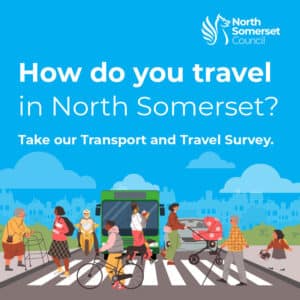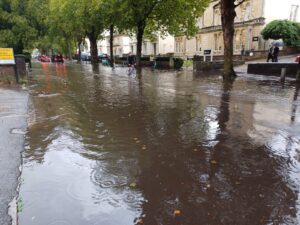Dr Adrian Davis
Top line: Population-level efforts to increase non-leisure physical activity, particularly active transport, are sorely needed as a means of help promote and maintain active lifestyles. Walking to and from public transport stops can help physically inactive populations attain the recommended level of daily physical activity.
Approximately 65% of adults in England do not meet the recommendation of 30 minutes of physical activity on most days of the week. There is a large disease burden associated with physical inactivity and major costs to the NHS, the economy, as well as quality of life resulting from chronic and preventable diseases. It is increasingly recognized that transport mode choice can significantly affect the amount of physical activity commuters accumulate during the course of a typical work day without planned or coordinated exercise programs (benefits also apply to those using public transport for other purposes). Walking as part of the commute has been suggested as a source of healthful moderate activity, as it is widely recognised that regular walking protects against a range of major diseases.1 Some public transport users may achieve 30 minutes of physical activity daily solely by walking to and from transport stops.
Two cross-sectional studies have assessed differences between car, bus and train commuters in level of physical activity. In the first study, one hundred and eleven train and car commuters were asked to wear a pedometer for one week of commuting on their regular route plus complete a standardized self-report physical activity index. 2 Train commuters walked an average of 30% more steps per day, reported having walked for a period of 10 minutes or more while travelling significantly more often, and were 4 times more likely to walk 10,000 steps per day than car commuters.
Results from a second study also suggest that those who walk to and from public transport stops obtain an appreciable amount of daily transport-related physical activity (median of 19 minutes).3 This study also suggests that 29% of public transport walkers achieve 30 minutes of daily physical activity solely by walking to and from transport stops. Efforts to increase public transport accessibility and usage may not only decrease road congestion and air pollution but may have the added health benefit of increasing the proportion of adults who obtain 30 minutes of daily physical activity.
People of lower socioeconomic status obtained the greatest amount of physical activity by walking to and from public transport stops, while it is this same population that experiences some of the highest levels of obesity. Reasons for more walking among low-income populations could be that they are more likely to live in urban areas with better access to public transport or are less likely to own a car.
1 See Essential Evidence No. 6 http://www.bristol.gov.uk/ccm/content/Transport-Streets/WalkingCycling/cycling-in-bristol/essential-evidence/essential-evidence.en
2 Wener, R., Evans, G. 2007 A morning stroll. Levels of Physical Activity in Car and Mass Transit Commuting, Environment and Behaviour, 39(1): 62-74. 3 Besser, L., Dannenberg, A. 2005 Walking to public transit. Steps to help meet physical activity recommendations, American Journal of Preventive Medicine, 29(4): 273-280.
28: Public Transport and Physical Activity
Download
pdf
PDF approximately 14.94 K




